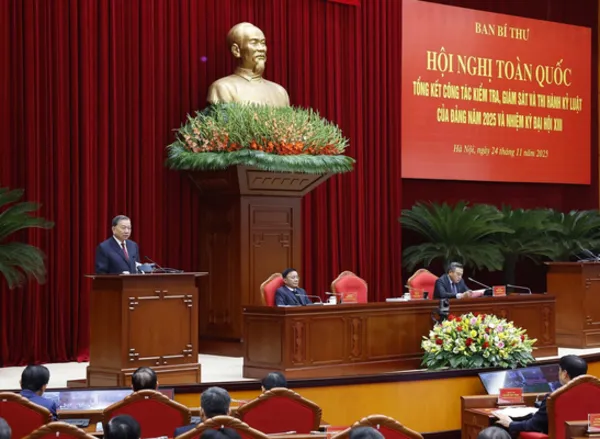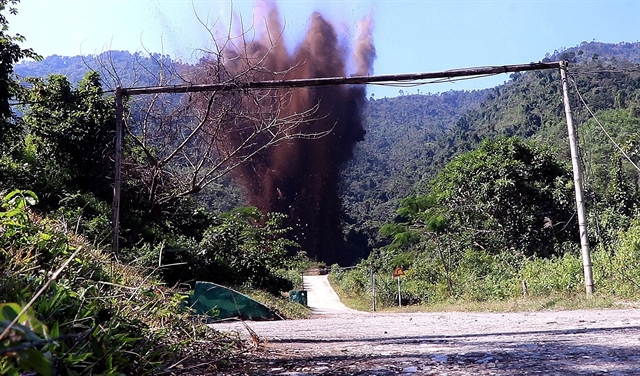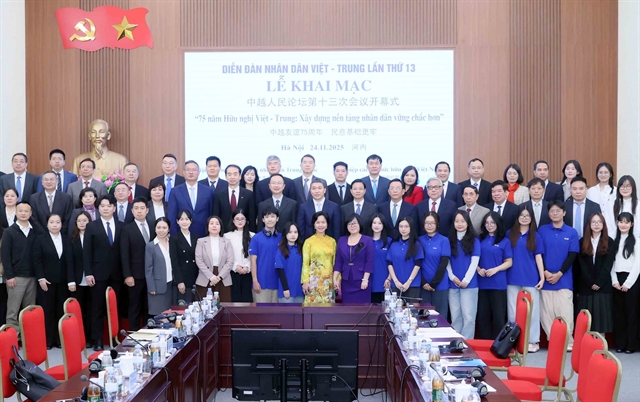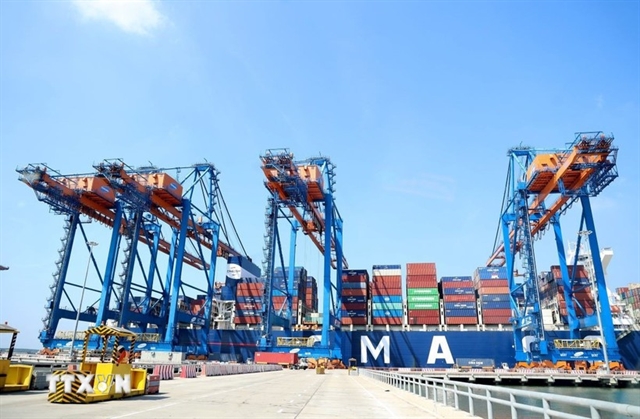 Economy
Economy

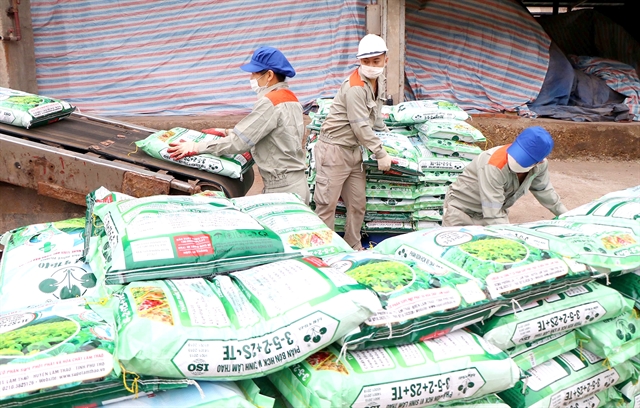 |
| Super Lâm Thao's new products, NPK-S microbiological fertiliser and microorganism mineral fertiliser, for development of green agriculture. VNA/VNS Photo Trung Kiên |
HÀ NỘI — Fertiliser manufacturers have implemented solutions to significantly reduce their carbon emission in production and improve energy efficiency.
Phùng Hà, general secretary and vice chairman of the Việt Nam Fertiliser Association said that global agricultural output would decrease by 50 per cent if no fertilisers were used. However, about 2.5 per cent of total global greenhouse gas emissions are related to fertiliser.
Domestic fertiliser manufacturers have taken many measures to significantly reduce carbon emissions in production.
Energy consumption of ammonia production plants has decreased by more than 15 per cent in the past decade. Several fertiliser companies have implemented greener methods of fertiliser production, including supply of renewable energy sources for the ammonia production process.
Another solution is to develop fertiliser products such as the decomposing, slow-dissolving, and controlled-release fertilisers that will help increase absorption and reduce harm to the environment.
Along with production, the right type, right rate, right timing and right placement of the fertilisers is also an effective solution to reduce emissions.
In addition, replacing synthetic fertilisers with manure or compost products has the potential to reduce emissions by 10-20 per cent or more.
Lê Hoàng Kiệt from Cà Mau Petroleum Fertiliser Joint Stock Company (PVCFC) said the company prioritises investment in developing sustainable green production, and reduction in using fertilisers to achieve the goal of reducing greenhouse gas emissions.
PVCFC is researching energy-saving technologies and solutions. Of which, it applies green technology in production lines to optimise the efficiency of using input materials of its nitrogen fertiliser plant.
In addition, PVCFC is studying production technologies and feasibility on projects to produce industrial gases such as nitrogen, argon, green hydrogen and food CO2.
For fertiliser product development, PVCFC has developed a number of modern technologies such as Bio-Coating technology, Humate complex technology, biotechnology, controlled release fertilisers (CRF) technology, and slow-release fertilisers (SRF) technology, to develop fertiliser product lines having high efficiency in agricultural production. Those will increase crop yield and resistance to pests and diseases, and help reduce greenhouse gas emissions.
The application of Bio-Coating technology has helped PVCFC to create economical fertiliser products, disease resistant fertiliser products and bio fertiliser products. That helps reduce the amount of used urea nitrogen fertiliser by 15-20 per cent.
PVCFC also builds a soil nutrient map by ecological region integrated with a database to digitize the soil database and crop nutrient needs, contributing to improving efficiency in fertiliser use and reducing greenhouse gas emissions.
The company has also studied and applied using biomass-fuel to replace fuel oil (FO) in drying NPK (nitrogen, phosphorus, and potassium) fertiliser products and additive products to help slash production costs and carbon emissions.
The company has also made the use of steam and excess heat from sulfuric acid production lines to run turbines to generate electricity, contributing to economical and efficient use of energy. — VNS

